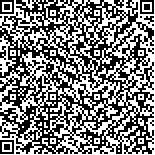陈飞宇,刘小平,甘书智,等.温针灸结合悬吊训练对肩袖损伤患者肌腱弹性和肩关节功能的影响及其相关性分析[J].中华物理医学与康复杂志,2024,46(4):331-336
扫码阅读全文

|
| 温针灸结合悬吊训练对肩袖损伤患者肌腱弹性和肩关节功能的影响及其相关性分析 |
|
| |
| DOI:10.3760/cma.j.issn.0254-1424.2024.04.009 |
| 中文关键词: 肩袖损伤 温针灸 悬吊训练 实时剪切波弹性成像 杨氏模量 |
| 英文关键词: Rotator cuff injury Acupuncture Warm acupuncture Suspension training Shear wave elastography Young′s modulus |
| 基金项目:浙江省中医药科技计划(2022ZB242,2022ZA112);杭州市医学重点学科建设项目资助(OO202000097) |
|
| 摘要点击次数: 3170 |
| 全文下载次数: 3329 |
| 中文摘要: |
| 目的 以弹性超声成像为评估手段,观察温针灸结合悬吊训练对肩袖损伤后肌腱弹性和肩关节功能的影响以及两者变化的相关性。 方法 将符合纳入条件的60例肩袖损伤患者随机分为治疗组和对照组,每组30例,均行关节松动康复训练治疗,每周训练3次(周一、三、五),每次20 min,共治疗6周。在此基础上,对照组给予单纯温针灸治疗,治疗组加行温针灸和悬吊训练治疗,每周3次(周一、三、五),每次30~40 min(艾条燃尽为止),6周为1个疗程。分别于治疗前和6周治疗结束后(治疗后),采用目测类比法(VAS)评分、肩关节各方主动活动度(SAROM)、杨氏模量(E)值评估2组患者的肩关节疼痛程度、肩关节的活动功能及肩袖肌腱弹性,并判定肌腱弹性及肩关节功能,分析两者间变化相关性。 结果 2组患者治疗后的VAS 评分和 E值较组内治疗前明显下降(P<0.05),其外展 SAROM 较组内治疗前显著增加(P<0.05);治疗后,治疗组的VAS评分、外展 SAROM和E值均明显优对照组(P<0.05)。相关性分析显示,VAS与外展SAROM成负相关变化(治疗组r2=0.306,P<0.05;对照组r2=0.178,P<0.05),而E值与VAS及外展SAROM均无线性相关关系,其中治疗组E值与VAS值的r2=7.723E-5,(P>0.05);E值与外展SAROM值的r2=0.004(P>0.05);对照组E值与VAS值的r2=0.025(P>0.05),E值与外展SAROM值的r2=8.363E-5(P>0.05)。 结论 温热针灸结合悬吊训练疗法可有效改善肩袖损伤患者肩关节功能和肌腱弹性,患者肩袖疼痛改善程度与肩关节活动度呈线性相关,但肩袖疼痛改善程度与肌腱弹性的变化无相关。 |
| 英文摘要: |
| Objective To evaluate the effect on tendon elasticity and shoulder joint function of combining warm acupuncture with suspension training in the rehabilitation of rotator cuff injuries. Methods Sixty patients with a rotator cuff injury were randomly divided into a treatment group and a control group, each of 30. Both groups received 20 minutes of joint loosening and warm acupuncture and then 30 to 40 minutes of moxibustion, three times a week for 6 weeks. The treatment group also performed suspension training. The Young′s modulus (E) and active range of motion of each subject′s injured shoulder joint were quantified before and after the treatment, and pain was rated using a visual analogue scale. Tendon elasticity was correlated with shoulder joint function. Results After treatment both groups′ average pain ratings and E values had decreased significantly, while the range of motion in abduction had increased significantly. All three indicators were then significantly better in the treatment group compared to the control group. The range of motion was significantly negatively correlated with the pain ratings in both groups. E, however, was not a significant predictor. Conclusion Warm acupuncture combined with suspension training can effectively improve the shoulder joint function and tendon elasticity of patients with a rotator cuff injury. The degree of pain relief is linearly related to shoulder joint mobility, but not to the changes in tendon elasticity. |
|
查看全文
查看/发表评论 下载PDF阅读器 |
| 关闭 |